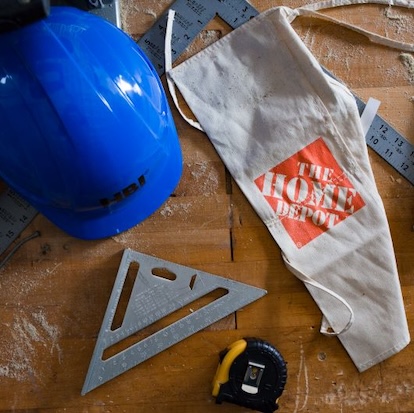The Home Depot hosted its second InFronts event for brand advertisers on its retail media network, Orange Apron Media, in April at Truist Park in Atlanta.
The home improvement retail chain unveiled several new features on its platform, such as geotargeting capabilities for on-site ads, to the roughly 350 suppliers who attended in person, and the hundreds more virtually.

Geotargeted ads are a big deal to Home Depot suppliers, said Melanie Babcock, vice president, Orange Apron Media and monetization at The Home Depot. Many home projects are seasonal or products are only needed in certain climates throughout the country, and advertisers need to use a shopper’s location in order to target them.
While geolocation is a feature that’s standard on many ecommerce websites, including The Home Depot, getting this feature within its advertising technology stack took time, Babcock said.
At the event, many brand advertisers asked about measurement. Unlike retailers, brands didn’t always have a direct way to show marketing dollars led to sales. Now that retail media networks can offer this measurement tool, brand marketers are eager to showcase attribution, Babcock said.
“There is just more pressure for marketers to prove performance,” Babcock said.
The Home Depot is launching a beta test to help demonstrate incrementality, which it is planning to scale in 2026, she said. It also plans to develop more measurement capabilities for attributing off-site influencer content back to the retailer.
Measurement is more than ROAS
Measuring the effectiveness of an ad’s marketing objective is important for brand suppliers, especially in the home improvement retail sector, which has a long research phase for buying a product, Babcock said.
While Orange Apron Media Network ads have “great ROAS”— on average more than $5 to $1 return on ad spend Babcock said declining to share more — ROAS is not always the key objective for an ad. A vanity, for example, has a much longer research phase than for crackers at a grocery store. The shopper is visiting HomeDepot.com for weeks learning and browsing various components of a vanity. An ad during the vanity browsing phase likely won’t immediately turn into a conversion but the ad could inspire the shopper to consider a different aspect to a vanity, such as a sink that requires holes predrilled into the vanity.
“ROAS isn’t going to happen in that moment,” she said.
During the event, The Home Depot also gathered feedback and questions from its suppliers so it can continue to build features to address their needs.
After the first few years of building and laying the foundation of its retail media network, The Home Depot is ready to assess its network to ensure it has what it needs to scale, Babcock said.
Read our Q&A with Melanie Babcock when the retailer unveiled its new self-service ad platform here.

 Network
Network

